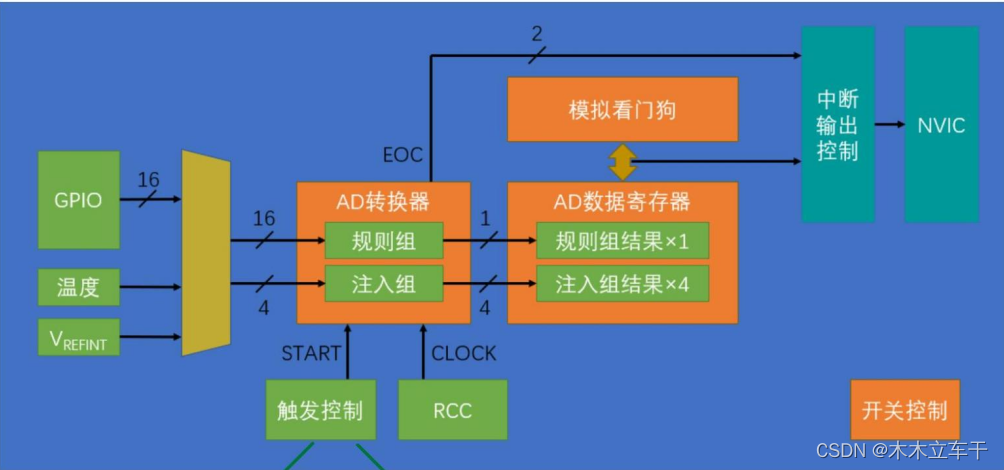单片机C语言程序设计项目实战:从零到一开发单片机系统的完整指南
发布时间: 2024-07-08 08:15:04 阅读量: 70 订阅数: 28 


java毕设项目之ssm基于SSM的高校共享单车管理系统的设计与实现+vue(完整前后端+说明文档+mysql+lw).zip

# 1. 单片机C语言程序设计基础
### 1.1 C语言基础语法
C语言是一种结构化程序设计语言,其语法结构简洁明了。本章将介绍C语言的基本语法,包括数据类型、变量、常量、运算符、控制语句和函数等内容。
### 1.2 单片机C语言特点和扩展
单片机C语言是在标准C语言的基础上,针对单片机特点进行的扩展。本章将介绍单片机C语言与标准C语言的区别,以及单片机C语言中新增的寄存器访问、位操作和中断处理等特性。
### 1.3 单片机C语言程序结构
单片机C语言程序一般由头文件包含、变量声明、函数定义和主函数组成。本章将介绍单片机C语言程序的结构和组织方式,以及如何使用头文件、变量、函数和主函数来构建一个完整的单片机程序。
# 2. 单片机硬件平台与开发环境搭建
### 2.1 单片机硬件平台简介
单片机是一种将中央处理器(CPU)、存储器(ROM、RAM)、输入/输出(I/O)接口等集成在一块芯片上的微型计算机。其特点是体积小、功耗低、成本低,广泛应用于各种电子设备中。
常见的单片机硬件平台包括:
- **51系列单片机:**由英特尔公司开发,采用8位架构,具有较高的性价比,广泛应用于低成本的控制系统中。
- **AVR系列单片机:**由Atmel公司开发,采用RISC架构,具有较高的性能和较低的功耗,广泛应用于中小型控制系统中。
- **STM32系列单片机:**由意法半导体公司开发,采用ARM Cortex-M内核,具有较高的性能和较丰富的功能,广泛应用于中大型控制系统中。
### 2.2 开发环境的搭建和配置
单片机开发环境包括编译器、调试器、仿真器等工具,用于编写、编译、调试和仿真单片机程序。
常用的单片机开发环境包括:
- **Keil MDK:**由ARM公司开发,支持多种ARM内核单片机,提供集成开发环境(IDE)、编译器、调试器和仿真器。
- **IAR Embedded Workbench:**由IAR Systems公司开发,支持多种单片机,提供IDE、编译器、调试器和仿真器。
- **Code Composer Studio(CCS):**由德州仪器公司开发,支持TI公司的单片机,提供IDE、编译器、调试器和仿真器。
开发环境的搭建和配置步骤如下:
1. 下载并安装开发环境软件。
2. 安装单片机开发工具包(SDK),包含单片机头文件、库函数和示例程序。
3. 配置开发环境,包括编译器、调试器和仿真器的设置。
### 2.3 常用开发工具的使用
常用的单片机开发工具包括:
- **编译器:**将单片机程序源代码编译成机器码,生成可执行文件。
- **调试器:**用于调试单片机程序,可以设置断点、单步执行、查看变量值等。
- **仿真器:**用于仿真单片机程序,可以在计算机上模拟单片机硬件环境,方便程序调试。
#### 代码块
```c
#include <stdio.h>
int main() {
int a = 10;
int b = 20;
int c = a + b;
printf("a + b = %d\n", c);
return 0;
}
```
#### 代码逻辑分析
该代码块展示了单片机C语言中变量声明、赋值、加法运算和printf函数的使用。
- 第1行:包含标准输入/输出头文件`<stdio.h>`。
- 第4-6行:声明三个整型变量`a`、`b`和`c`。
- 第8行:将`a`和`b`相加,结果赋值给`c`。
- 第10行:使用`printf`函数打印`c`的值。
- 第12行:返回0,表示程序执行成功。
#### 参数说明
- `printf`函数:格式化输出函数,用于打印数据到标准输出。
- `%d`:格式化说明符,指定输出整数。
# 3.1 C语言基础语法
**3.1.1 数据类型**
C语言中的数据类型用于定义变量可以存储的值的类型。常见的数据类型包括:
- 整数类型:int、short、long
- 浮点数类型:float、double
- 字符类型:char
- 字符串类型:string
**3.1.2 变量**
变量用于存储数据。变量需要先声明,然后才能使用。变量的声明语法如下:
```c
数据类型 变量名;
```
例如:
```c
int age;
```
**3.1.3 常量**
常量是值不可变的变量。常量的声明语法如下:
```c
const 数据类型 常量名 = 值;
```
例如:
```c
const int MAX_VALUE = 100;
```
**3.1.4 运算符**
运算符用于对数据进行操作。常见的运算符包括:
- 算术运算符:+、-、*、/、%
- 关系运算符:==、!=、>、<、>=、<=
- 逻辑运算符:&&、||、!
**3.1.5 控制流**
控制流语句用于控制程序的执行流程。常见的控制流语句包括:
- if-else语句:用于根据条件执行不同的代码块
- switch-case语句:用于根据多个条件执行不同的代码块
- for循环:用于重复执行一段代码块
- while循环:用于重复执行一段代码块,直到满足退出条件
**3.1.6 函数**
函数是代码的块,可以被多次调用。函数的声明语法如下:
```c
数据类型 函数名(参数列表)
{
函数体
}
```
例如:
```c
int sum(int a, int b)
{
return a + b;
}
```
### 3.2 单片机C语言特点和扩展
单片机C语言是针对单片机设计的C语言方言。它具有以下特点:
- **精简性:**单片机C语言只包含C语言中最基本的特性,以减小代码大小和提高执行效率。
- **可移植性:**单片机C语言代码可以在不同的单片机平台上移植,只要编译器支持。
- **扩展性:**单片机C语言提供了针对单片机硬件的扩展,如寄存器访问和中断处理。
**3.2.1 寄存器访问**
寄存器是单片机内部的存储单元,用于存储数据和控制硬件。单片机C语言提供了访问寄存器的扩展,如:
```c
*reg = value; // 写寄存器
value = *reg; // 读寄存器
```
**3.2.2 中断处理**
中断是一种硬件事件,当发生中断时,程序会暂停当前执行并跳转到中断服务程序。单片机C语言提供了中断处理扩展,如:
```c
void interrupt_handler()
{
// 中断服务程序
}
```
### 3.3 单片机C语言程序结构
单片机C语言程序通常遵循以下结构:
- **头文件包含:**包含必要的头文件,如`<stdio.h>`、`<stdlib.h>`。
- **全局变量声明:**声明全局变量,这些变量可以在整个程序中访问。
- **函数声明:**声明函数,这些函数可以在程序中多次调用。
- **main函数:**程序的入口点,从这里开始执行。
- **函数定义:**定义函数,包括函数体和参数列表。
**3.3.1 头文件包含**
头文件包含预定义的函数、宏和数据类型。常见的头文件包括:
- `<stdio.h>`:标准输入/输出函数
- `<stdlib.h>`:标准库函数
- `<stdint.h>`:整数类型定义
**3.3.2 全局变量声明**
全局变量可以在整个程序
0
0





